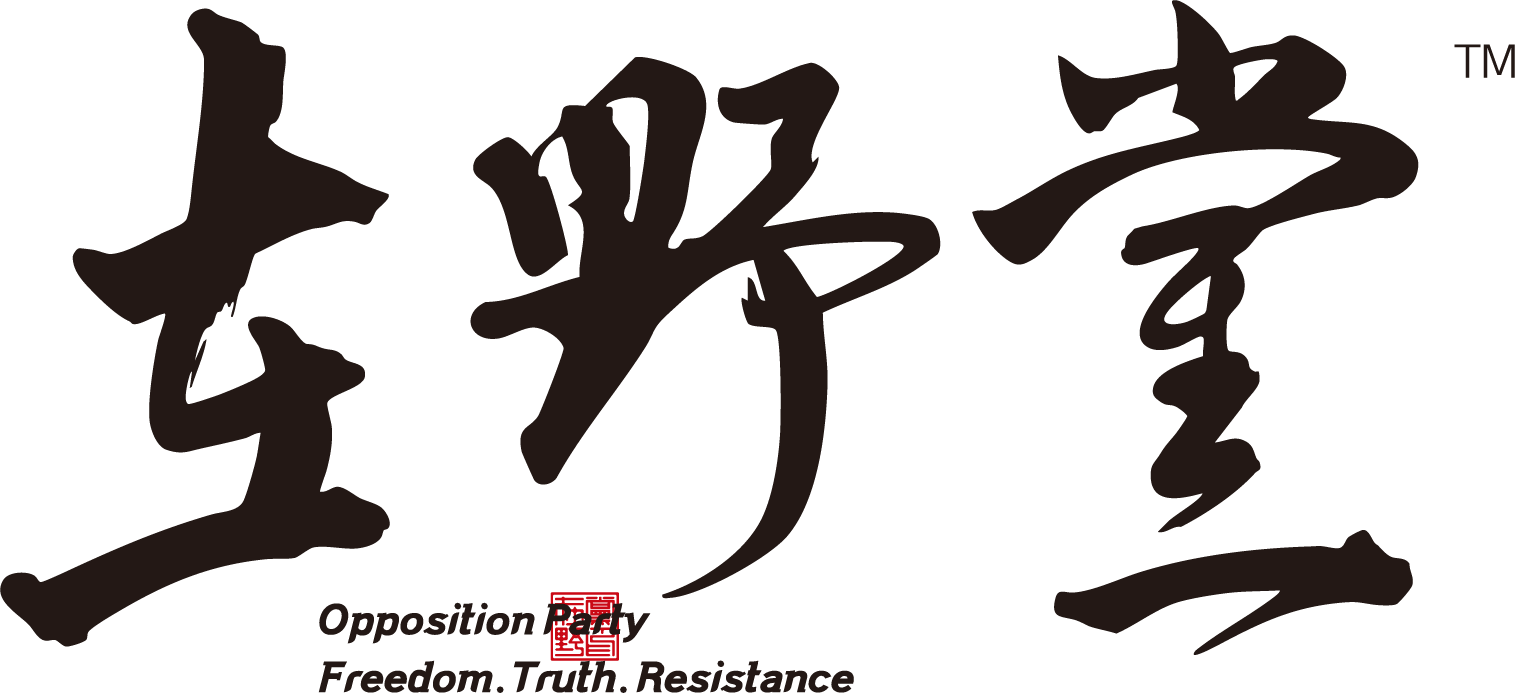(宪法第三条:国家名称的意义与愿景)
On the Future of Democracy in China: A Detailed Interpretation of the “Five-People Constitution”
Part V — Article 3 of the Constitution: The Meaning and Vision Behind the Nation’s Name
作者:何清风 编辑:冯仍 责任编辑:鲁慧文 翻译:鲁慧文
关键词:五民主义,宪法,中华联邦共和国,历史
中华民族联邦共和国宪法第三条是一条载深厚历史底蕴与前瞻愿景的条款它不仅明确了国家的名称与简称,还通过“五民主义”的核心理念,勾勒出一个致力于民族团结、民主治理与文化复兴的联邦制共和国的蓝图。本文将从历史背景、条款内容、设计理念及其现实意义四个方面,深入剖析这一条款的内涵。力求以通俗清晰的方式让读者理解其精神与价值。
一、历史与文化的根基:国家名称的意义
宪法第三条开篇即明确国家的全称为“中华民族联邦共和国”,简称“中华联邦”或“中国”及“中华民国”。这一名称的选择并非随意,而是对中华民族悠久历史与多元文化的深刻总结与致敬。“中华民族”这一概念,承载了中国数千年文明中多民族融合的独特历史。从黄河流域的华夏文明,到草原、西南、西域等地的多民族交融中国形成了以汉族为主体、多民族共同繁荣的文化格局。宪法以“中华民族”作为国家名称的核心,彰显了对多元族群共存共荣的尊重,强调各民族在国家建设中的平等地位。且中华民族联邦共和国的简称能更好地兼顾“中国”、“中华民国”这两个现有政体,为未来可能实现的统一提供法理依据。
“联邦共和国”的定性则进一步明确了国家的政治架构。联邦制意味着在统一的国家框架下,各地区、各民族拥有明确的自治权,这既是对中国历史“郡县制”与“藩属制”传统的现代演绎,也是对当代多民族国家治理挑战的回应。简称“中华联邦”或“中国”,既保留了历史上的国家认同符号,又以“中华民国”呼应了近代以来追求共和的理想。体现了历史传承与现代性的融合。
二、五民主义的理念:国家治理的灵魂
宪法第三条的核心在于提出了“五民主义”作为国家治理的指导原则。 即“五民主义”——民治、民主、民权、民生、民族。是对国家治理的系统思考,更是对中国传统政治哲学与现代民主理念的融合。
民治:公民治理国家
民治强调国家权力来源于公民,公民不仅是国家的主体,也是治理的参与者。这一理念承接了西方民主理论中的“民有、民治、民享”精神,同时与中国传统“民本”思想相呼应。民治意味着政府必须对公民负责,确保决策过程公开透明,并通过选举、听证等方式推动公民直接参与公共事务。在中华民族联邦共和国的框架下,民治不仅是理想,更是通过联邦制赋予地方更大自治权,让各族群、各地区的声音都能在国家治理中得到体现。即国家源于公民,权力源于公民。
民主:实现民主共和
民主是五民主义的核心支柱之一。宪法明确国家为“联邦制共和国”、表明追求的是权力分立、依法治国的民主共和制度。与单一制国家不同,联邦制通过中央与地方的权力分配,保障了治理的灵活性与多样性。民主共和不仅体现在选举制度上,还包括对多元意见的包容、对弱势群体的保护以及对权力滥用的制约。这种制度设计旨在避免集权带来的弊端,确保国家在统一中保持活力。
民权:保障公民权利
民权是五民主义中对个体尊严的承诺。宪法通过“保障公民权利”强调了每个公民在法律面前的平等地位,无论其民族、性别、宗教或社会背景。民权不仅包括基本的自由权(如言论、宗教、结社自由),还涵盖经济、社会、文化权利,如受教育权、劳动权等。在一个多民族国家中,民权的保障尤为重要,它是化解族群矛盾、促进社会和谐的基石。宪法通过联邦制赋予地方明确的立法权,使得民权保障能够因地制宜,更好地适应各地实际情况。
民生:建设民生社会
民生作为五民主义的实践目标,体现了国家对人民福祉的重视。宪法将“建设民生社会”作为目标,意味着国家政策将优先聚焦于教育、医疗、住房、社会保障等基本民生领域。与传统“以经济为中心”的发展模式不同,民生社会的建设强调的是公平与可持续发展,旨在缩小城乡差距、地区差距、贫富差距与族群差距。这种理念不仅是对中国近代以来“富国强民”理想的延续,也是对全球化时代社会公平诉求的回应。
民族:复兴民族文化
民族文化的复兴是五民主义中最具中国特色的部分。中华民族联邦共和国作为一个多民族国家,拥有丰富的文化遗产,如满族、鄂伦春族的渔猎文化每一种文化都是国家软实力的重要组成部分。宪法通过“复兴民族文化”强调对各民族文化的保护与弘扬,以及去除糟粕革新民族文化,同时促进各民族文化的交流与融合。这种文化政策不仅增强了国民的归属感,也为国家在国际舞台上树立了独特的文化形象。
三、设计理念:平衡统一与多元
宪法第三条的设计理念可以总结为“在多元中求统一,在统一中促发展”。这一理念通过联邦制与五民主义的结合得以实现。首先,联邦制是应对中国多民族、多地域现实的最佳选择。中国幅员辽阔,人口众多,各地在经济、文化、语言等方面差异显著。单一制治理容易造成政策统一而缺乏差异化,难以满足地方实际需求。难以满足地方需求。而联邦制通过赋予地方自治权,允许各地区根据自身特点制定政策,既保证了国家的整体统一,又尊重了地方的独特性。例如,少数民族地区可以在教育、语言、文化保护等方面拥有更大的自主权,从而增强民族认同与国家凝聚力。此外,宪法第三条的设计还体现了“以文化为纽带”的国家构建思路。中华民族作为一个多民族共同体,其凝聚力不仅来自政治与经济,更来自共同的文化认同。通过复兴民族文化,宪法试图在多元族群之间建立情感纽带,从而增强国家认同感。这种以文化认同为纽带的治理理念,在中国历史传统中根基深厚。如“和而不同”的儒家思想,为现代国家建设提供了重要的精神资源。
四、现实意义:面向未来的国家蓝图
宪法第三条不仅是一条法律条款,更是一个面向未来的国家蓝图。它为中华民族联邦共和国的建设提供了清晰的方向,可替换为“在当前环境下尤显关键”以增强语气。首先,它为多民族国家的治理提供了新范式。在全球范围内,多民族国家的治理是一个复杂课题,族群冲突、地区分裂等问题时有发生。中华民族联邦共和国通过联邦制与五民主义的结合,提出了一种既能保障统一又能尊重多元的治理模式。这种模式不仅适用于中国,也为其他多民族国家提供了借鉴。其次,它回应了公民对公平与参与的期待。在现代社会,公民对政治参与、权利保障与生活质量的诉求日益强烈。宪法第三条通过民治、民主、民权、民生等原则,承诺构建一个以公民为中心的社会。这种承诺不仅增强了政府的合法性,也为社会稳定奠定了基础。最后,它为文化复兴与国家软实力提升提供了保障。在全球化的背景下,文化软实力成为国家竞争力的重要组成部分。宪法通过“复兴民族文化”明确了文化建设的重要性,这不仅提升了国民文化自信,也增强了中国的国际文化影响力。
结语:
中华民族联邦共和国宪法第三条以简洁的文字,描绘出一个宏大的国家愿景。它以“中华民族”为核心,凝聚多民族的历史与文化;以“联邦共和国”为框架,平衡统一与多元;以“五民主义”为指导,回应公民对治理、权利与福祉的期待。这一条款不仅是国家治理的纲领,更是中华民族迈向未来的宣言。通过深入理解其内容与设计理念,我们可以看到一个致力于民主、公平与文化复兴的国家的美好前景。这不仅是对中国历史传统的继承,也是对未来治理挑战的积极回应。
“五民主义” 奠基人、《五民宪法》撰写人何清风。
On the Future of Democracy in China: A Detailed Interpretation of the “Five-People Constitution”
Part V — Article 3 of the Constitution: The Meaning and Vision Behind the Nation’s Name
By He Qingfeng | Edited by Feng Reng | Chief Editors: Luo Zhifei, Lu Huiwen | Translated by: Lu Huiwen
Keywords: Five-People Doctrine, Constitution, Federal Republic of China, History
Introduction
Article 3 of the Constitution of the Federal Republic of the Chinese Nation is a clause rich in historical depth and forward-looking vision. It not only clarifies the official name and abbreviation of the nation, but also, through the core principle of the “Five-People Doctrine,” outlines a blueprint for a federal republic committed to national unity, democratic governance, and cultural revival. This article analyzes Article 3 from four perspectives: historical background, content of the clause, design philosophy, and real-world significance. The aim is to help readers understand its spirit and value in a clear and accessible manner.
I. Historical and Cultural Foundations: The Significance of the Nation’s Name
Article 3 begins by stating that the official name of the country is “Federal Republic of the Chinese Nation,” abbreviated as “Zhonghua Federation,” “China,” or “Republic of China.” This name is not arbitrary; it is a tribute to the long history and cultural diversity of the Chinese people. The term “Chinese Nation” (中华民族) embodies the unique historical process of multi-ethnic integration over thousands of years of civilization—from the Huaxia culture of the Yellow River basin to the diverse ethnic mingling across the steppes, the Southwest, and the Western regions. By placing “Chinese Nation” at the heart of the national name, the Constitution affirms equal participation of all ethnicities in nation-building and honors the co-existence of diverse groups.
The abbreviation accommodates both “China” and “Republic of China,” providing a legal basis for potential future unification.
The designation “Federal Republic” defines the political framework of the nation. Federalism implies that within a unified national structure, regions and ethnic groups hold clear autonomous powers. This not only modernizes traditional Chinese systems such as the junxian (prefecture-county) and fanzhou (vassal) systems, but also responds to the contemporary challenges of governing a multi-ethnic state. The use of “Zhonghua Federation” or “China” retains historical identity symbols while resonating with the republican ideals pursued since the early 20th century—showing a harmonious blend of tradition and modernity.
II. The Five-People Doctrine: The Soul of National Governance
At the core of Article 3 lies the introduction of the “Five-People Doctrine” (五民主义) as the guiding principle of state governance. This doctrine—comprising People’s Governance, Democracy, Civil Rights, People’s Livelihood, and National Culture—represents a systemic vision for governance, integrating traditional Chinese political thought with modern democratic ideals.
• People’s Governance (民治): Citizens Governing the State
This concept emphasizes that state power derives from the people, who are not only the foundation of the nation but also active participants in governance. It echoes the democratic spirit of “of the people, by the people, for the people” in the West while aligning with China’s traditional “people-oriented” (民本) philosophy. Under this framework, governance must be accountable, transparent, and participatory, allowing citizens direct involvement through elections, public hearings, and more. Federalism enables broader local autonomy, ensuring that the voices of all ethnicities and regions are heard. The state exists because of its citizens, and its power originates from them.
• Democracy (民主): Realizing a Democratic Republic
Democracy is one of the central pillars of the Five-People Doctrine. Declaring the nation a “federal republic” signals a commitment to power separation and the rule of law. Second, it responds to citizens’ demands for fairness and participation. In modern society, people increasingly expect political involvement, protection of rights, and quality of life. Article 3’s principles—people’s governance, democracy, civil rights, and welfare—commit to building a citizen-centered society. This not only strengthens governmental legitimacy but also lays a foundation for lasting stability.
Finally, it supports cultural revival and the growth of national soft power. In the era of globalization, cultural identity is crucial to national strength. By affirming cultural development in its Constitution, the nation boosts citizens’ cultural confidence and its international image.
Conclusion
With concise language, Article 3 of the Constitution of the Federal Republic of the Chinese Nation outlines a grand national vision. It centers on the “Chinese Nation,” embracing its historical and cultural diversity. It frames the nation as a “Federal Republic,” balancing unity and pluralism. Guided by the Five-People Doctrine, it answers citizens’ calls for governance, rights, and welfare.
This clause is not just a constitutional principle—it is a declaration of the Chinese Nation’s future. By understanding its content and design, we glimpse a hopeful prospect: a nation devoted to democracy, fairness, and cultural renewal.
He Qingfeng, founder of the Five-People Doctrine and author of the Five-People Constitution.







16期-rId5-400X400.jpeg?w=100&resize=100,70&ssl=1)
